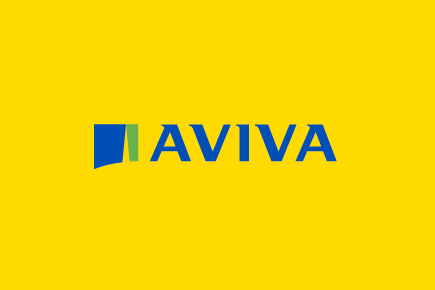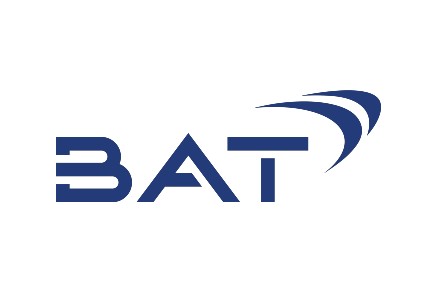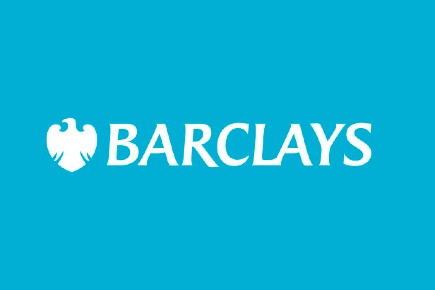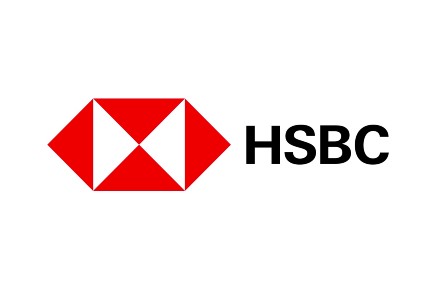Among the thousands of shares available on the market, the equity research team here at Investing Reviews have identified the best dividend stocks to buy now for UK investors. We hope this helps you make an informed decision on which dividend stocks to buy now.
With Q2 earnings results now out of the way, the investment cases for many companies have now been refreshed as have their potential payouts. As such, this could be a great time to buy shares of companies that are performing well and are expected to pay good dividends in the future. So, here are 10 of the best dividend stocks to buy in July.
Also consider: Our latest best shares to buy now.
- My pick of the best dividend stocks to buy now in the UK, July 2025
- What are dividends?
- How can I invest in dividend stocks?
- How do I find the best dividend stocks?
- Do you always get dividends with shares?
- What are the tax rules for dividend stocks?
- Are dividend stocks a good investment?
- What are the highest-paying dividend stocks?
- Stocks paying dividends FAQs
My pick of the best dividend stocks to buy now in the UK, July 2025
- Aviva (LON:AV) – C. 8.3% yield
- British American Tobacco (LON:BATS) – A colossal 8.5% yield
- Taylor Wimpey (LON:TW) – At least c.7.5% of its net asset value*
- BAE Systems (LON:BA) – 2.7% dividend
- Lloyds (LON:LLOY) – Generous dividend yield of 5.8%
- Barclays (LON:BARC) – 4.8% dividend yield
- HSBC (LON:HSBA) – Dividend yield of 5.3%
- Hargreaves Lansdown (LON:HL) – 5.2% dividend
- Rio Tinto (LON:RIO) – 6.2% dividend yield
- Diageo (LON:DGE) – 2.5% dividend
Please Note: These picks are not personal recommendations or financial advice. Do not buy these investments solely based on what you read in this article.
Aviva is the largest general insurer and a leading life and pensions provider. It offers a wide range of insurance products, including life insurance, general insurance, health insurance, as well as a number of investment products.
The Aviva share price (LON:AV) has seen a decline of c.14% since its peak in Q1. However, this dip could present an appealing opportunity to purchase Aviva shares, given its track record as a well-managed insurance giant and its impressive dividend yield, which offers a considerable premium to the index average.
Analysts’ consensus projections paint a brighter future for the insurer, with expected earnings per share (EPS) forecasted at 52.5p in 2023, 61.1p in 2024 and further to 67.3p in 2025. These projections translate into a forward price-to-earnings (P/E) ratio of 7.6, significantly lower than the FTSE 100‘s average.
These forecasts suggest that Aviva shares hold substantial growth potential in the medium term, offering an attractive prospect for investors who appreciate the company’s solid fundamentals and growth prospects. Furthermore, with a forward yield of approximately 8.3%, Aviva is one of the most robust dividend stocks within the index, and coverage is expected to be around 1.9x.
British American Tobacco (BAT) is the second-largest tobacco company in the world. Its main brands include Dunhill, Kent, and Lucky Strike. The company also produces a range of other tobacco products, such as cigars, pipes, and chewing tobacco.
So-called ‘sin stocks’ like British American Tobacco (LON:BATS) won’t be suitable for all investors. But, the tobacco giant may pique the curiosity of those who like dividend stocks due to its colossal 8.5% yield.
Granted, BAT shares face significant risks. Increasingly stringent government regulations and rising cigarette taxes make for a smoky outlook. Many analysts contend that the industry’s best days are behind it and tobacco stocks are now in long-term decline.
Nonetheless, the Lucky Strike maker has other ideas. Significant investment in its non-combustible products range is beginning to pay off. Spanning vapour, oral nicotine and heated tobacco, the firm’s ‘New Category’ division now accounts for 16.6% of total group revenue, having increased at a 33% compound annual growth rate since 2019.
If BAT’s alternative nicotine products continue to grow in popularity, it may be too soon to write off the stock just yet. Moreover, the tobacco giant anticipates to generate £40bn in free cash flow before dividends over the next five years, indicating shareholders might be able to count on big payouts for a while.
Taylor Wimpey is one of Britain’s largest housebuilders. It builds properties across the UK but also has operations in Spain. Altogether, it builds approximately 10,000+ properties per year, ranging from apartments to six-bedroom houses.
As the inflation picture begins to brighten, housebuilder stocks like Taylor Wimpey (LON:TW) begin to look more attractive for medium-to-long-term investors. Although the outlook surrounding the sector remains cloudy as affordability continues to get clamped down by higher interest and mortgage rates, investors looking for solid dividend stocks will be assured by the developer’s dividend policy.
The group’s robust dividend policy is asset-based rather than earnings-based, thereby making it a rare pick amongst its peers which all have earnings-based dividend policies. As such, it’s been no surprise to see the likes of Persimmon and Barratt cutting their dividends as of late.
But unlike its competitors, Taylor Wimpey promises to pay at least c.7.5% of its net asset value or £250m in dividends annually. This should allow investors to receive a relatively steady stream of passive income in both good times and bad.
In addition to this, housing affordability is beginning to rise again as real wages are now treading above inflation. This should see the drop in housing demand hit a nadir soon, especially as inflation continues to moderate. This would have a positive effect on Taylor Wimpey’s earnings and dividend outlook.
Read more: The full breakdown of Taylor Wimpey shares and my price target on my Taylor Wimpey share price prediction.
BAE Systems is the largest defence contractor in Europe and the third-largest in the world. Its main products include aircraft, ships, submarines, weapons systems, and electronic systems.
BAE Systems shares (LON:BA.) are defensive in every sense of the word. The astronomic rise in the BAE share price since Russia’s invasion of Ukraine has pushed the stock to an all-time high. However, the stellar price gains have also lowered the contractor’s dividend yield to 2.7%.
BAE is Europe’s largest defence and security contractor, boasting deep expertise in developing cutting-edge military technology. The conglomerate has a wide economic moat and a significant competitive advantage. Couple that with an excellent long-term record of distribution growth and dividend cover of 2.1x current earnings and the investment case looks compelling.
A possible easing of geopolitical tensions might be the biggest risk facing BAE Systems shares right now. Yet, developments in Ukraine don’t point to that happening any time soon; neither does China’s sabre-rattling over Taiwan. Furthermore, the business has a mighty cushion thanks to its record £66.2bn order backlog.
BAE doesn’t exactly make the list of ‘best dividend stocks’ for many investors as its forecast yields for the next few years trail the FTSE 100 average. But a rock-solid payout history and major tailwinds from frosty East-West relations suggest BAE shares still deserve serious consideration for those seeking stability.
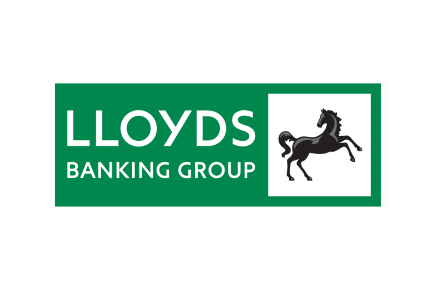
Lloyds is the UK’s biggest mortgage provider and commercial bank by number of customers. The group operates a number of subsidiaries that include Lloyds, Halifax, Bank of Scotland, and Scottish Widows. They offer financial products and services.
Having seen its share price decline from its 2023 high of 54p, Lloyds shares (LON:LLOY) now have a relatively generous dividend yield of 5.8%. Although downside risks remain, Lloyds shares may be worth buying as solid dividend stocks in September.
The bank stock could be close to hitting a bottom as the Bank of England approaches its terminal rate with inflation continuing to moderate. This could brighten the gloomy outlook for the lender’s potential profits which would subsequently affect its dividends.
Either way, investors should note that the Black Horse Bank’s current dividend is covered at 3.0x its earnings, thereby providing some security to its payouts. And with bank stocks expected to increase in value as interest rates drop in the medium term, September could be a prime time to secure higher payouts before the stock rises with lower yields.
That said, it’s also worth stating that a potential recession as a result of higher rates could undermine its dividends. But given the thinning probability of such an occurrence as inflation falls, Lloyds shares may be worth banking on.
Read more: The full breakdown of Lloyds shares and our price target on our Lloyds share price forecast.
Barclays is the largest investment bank in the UK and Europe. As a whole, it offers a wide range of financial services which include retail banking, investment banking, asset management, and insurance.
The Barclays share price (LON:BARC) has continued pushing despite strong earnings. The paradox lies in the fact that while rising interest rates are generally beneficial for banks, they can become a concern when they surpass optimal levels — and this explains the wariness of investors.
Nevertheless, Barclays recently passed the regulator’s stress test, albeit as the worst performer. Under the stress scenario, Barclays’ CET1 ratio would fall from 13.6% to 8.5%. This suggests that the Blue Eagle Bank has the lowest levels of capital flexibility.
Having said that, its performance to date under the higher rate environment has been strong. The lender achieved a return on tangible equity (RoTE) of 11.4%, exceeding its target of 10% or higher. Notably, during a particularly strong Q1 period when interest rates were closer to ideal levels, Barclays achieved an impressive RoTE of 13.2%.
Additionally, its dividend yield currently sits at a pretty decent 4.8%, far ahead of its 4-year average yield of 2.7%. And with coverage currently sitting at a phenomenally strong 3.6x, there’s plenty of security in this name among the list of dividend stocks out there.
Read more: The full breakdown of Barclays shares and our price target on our Barclays share price prediction.
HSBC is the world’s sixth-largest bank by total assets. It offers a wide range of financial products and services, including commercial, retail, and investment banking. The business also has a significant presence in the insurance and asset management sectors.
Despite some recent downward pressure, HSBC shares (LON:HSBA) have outperformed the FTSE 100 over the past 12 months, with a 21% increase in their value. This commendable performance largely stems from HSBC’s diversity, setting it apart from its UK-listed peers like Barclays and Lloyds.
In recent years, HSBC has strategically shifted its focus towards Asia, particularly in China and Hong Kong. This shift has proven to be a prudent move, as these regions contributed a third of the bank’s pre-tax profits in 2022, demonstrating the success of its Asian market emphasis.
While it’s important to acknowledge potential risks, such as its limited exposure to China’s commercial real estate sector (less than 2% of its total loans) and geopolitical tensions, HSBC’s appealing market valuations and robust financials make it an attractive investment proposition.
With a dividend yield of 5.3%, it significantly surpasses its four-year average yield of 3.9% with a coverage ratio of 2.5x. HSBC offers compelling returns for investors seeking dividend stocks with solid growth potential and stability.
Hargreaves Lansdown is the UK’s largest investment platform. Its product range includes ISAs, pensions, and other investment products while also offering a range of financial planning services.
Hargreaves Lansdown (LON:HL) finds itself among the FTSE 100’s smaller constituents in terms of market capitalisation, as it narrowly avoided relegation from the blue-chip index in September. That being said, it’s one of the best dividend stocks to buy in the UK’s premier index.
The broker’s share price has felt the impact of the ongoing cost-of-living crisis, with Britons seemingly reducing their investment activities due to financial constraints. This has compounded the decline in investor engagement that followed the post-pandemic economic reopening.
Even so, Hargreaves Lansdown benefits significantly from rising interest rates through higher net interest income. In its H1 results, it reported an impressive 168 basis point margin for cash and generated £121.6m in revenue from clients’ cash holdings, constituting 35% of its total revenue.
The corporation currently offers an attractive dividend yield of 5.2% with a cover of 1.3x. This is expected to improve further in 2023, making it an appealing option for income-seeking investors. The stock also looks particularly attractive trading near its five-year low P/E of 14.7.
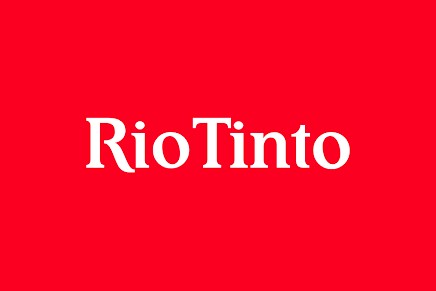
Rio Tinto is one of the world’s largest mining companies, producing a range of metals that include iron ore, copper, aluminium, and more. It has operations are spread across the world, with significant assets in Australia, Canada, Chile, and the United States.
Rio Tinto shares (LON:RIO) give investors exposure to the notoriously cyclical mining industry. Indeed, the Anglo-Australian group might be a controversial addition to this list in light of a recent 34% dividend cut, but it’s still one of the best dividend stocks to invest for the long term.
Iron ore is at the heart of this miner’s business, accounting for 77% of its underlying cash profits. Unusually weak demand from China resulting from the country’s economic slowdown has made for difficult trading conditions this year. Despite that, the long-term outlook for the Rio Tinto share price shows promise.
The miner’s operations are primarily concentrated in North America and Australia. These are stable, democratic jurisdictions — often a rarity in the global footprints of commodity giants. In addition, the miner’s diversification plans cover copper, aluminium and lithium. Rio Tinto’s portfolio expansion has potential, especially in the context of a global push to accelerate the transition to net zero.
Potential investors in Rio Tinto shares should note the ups and downs that inevitably come with owning mining stocks. But, for those prepared to embrace volatility, there’s a chunky 6.2% forward dividend yield on offer.
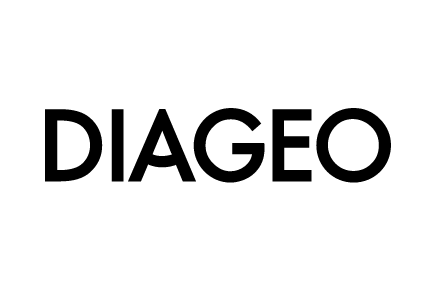
Diageo is the world’s largest distiller by revenue, with a portfolio of over 200 brands in over 180 countries. Diageo’s brands include Johnnie Walker, Smirnoff, Guinness, Baileys, Captain Morgan, and Tanqueray.
Compared to many other dividend stocks on this list, Diageo shares (LON:DGE) offer a more modest dividend yield of 2.5%. In spite of that, the alcoholic drinks giant’s appeal is in its status as a Dividend Aristocrat and the corresponding reliability of its shareholder distributions rather than its yield.
Diageo has hiked dividend payouts every year since its formation in 1997, most recently lifting its total dividend per share 5% to 80p. Notwithstanding that, slowing sales in the crucial US market and rising alcohol duty in the UK have hurt the company recently, causing the stock to fall to near a 52-week low.
Therefore, the share price slump could be a good opportunity for investors to take a position in a business with a flawless passive income record. Its present dividend cover looks robust at 2.0x current earnings. Further, Diageo’s strategy to build its premium brands portfolio shows promise and sales in global regions outside North America are growing.
Strong pricing power, broad geographic diversification and non-cyclical demand for its products all support the case for Diageo shares as a defensive portfolio addition. With a P/E ratio of 19.1, the stock isn’t cheap, but Warren Buffett doesn’t seem to mind. After all, it’s the only FTSE 100 stock the billionaire owns.
Please note
The value of your investments (and any income from them) can go down as well as up and you may not get back the full amount you invested. Past performance is not a reliable indicator of future performance. Investments should be considered over the longer term and should fit in with your overall attitude to risk and financial circumstances.
What are dividends?
Dividends are payments made to shareholders by a company, essentially as a reward for investing in them. These are typically paid out monthly, quarterly, annually, or in some cases bi-annually. Generally, dividends are calculated based on important business metrics, such as a company’s earnings for the year.
Dividends can be paid out in several different forms, such as cash payments or additional stocks. Generally, investors are free to withdraw and take their dividends as income. Alternatively, investors can reinvest the proceeds directly into more dividend stocks and shares.
How can I invest in dividend stocks?
Building a portfolio of dividend stocks is an investment of time as well as money, but it has the potential to bring in a healthy income stream. Here’s how to invest in dividend stocks:
- Open a trading account.
- Locate a stock that pays dividends.
- Evaluate the value of the stock.
- Decide how much stock to purchase.
If you’d like to find the right platform and account for you, make sure you read our list of the best investment apps before opening an account. Make sure you choose a platform or broker that’s authorised and regulated by the Financial Conduct Authority (FCA).
What is dividend investing?
Dividend investing is a tactic of deliberately targeting dividend stocks that bring in an income when the companies pay out dividends to their shareholders. This type of investment can provide a regular, passive income.
Dividend stocks vs dividend funds
Rather than buying dividend stocks directly, investors could consider investing in dividend funds instead.
Dividend funds are packages of investments that exclusively include dividend-paying stocks. This could be a mutual fund or even an exchange-traded fund (ETF). To invest in the fund, investors can simply buy units within it.
Buying funds can be more effective than buying individual stocks, as it means only making one investment while gaining exposure to a variety of dividend stocks. However, investors may end up having to pay a management fee for a fund, which could increase their investing costs.
How do I find the best dividend stocks?
Finding the best dividend stocks is a case of doing investment research into companies that suit your needs, checking whether they offer dividends, and then investing in them.
If you truly have no idea where to start when looking for dividend stocks, the S&P 500‘s Dividend Aristocrat Index can be a great springboard. The Dividend Aristocrat Index is a stock market index of some of the most consistent dividend-paying companies listed on the S&P 500 in the US.
Companies on the index, known as ‘Dividend Aristocrats’, must meet strict criteria to be included. They must have:
- A track record of paying dividends to their investors over a period of 25 years;
- Increased their dividend payout each year;
- At least $5m in average daily trading value.
At the very least, investing in a dividend aristocrat means investors can be fairly confident that they’re investing in a dependable dividend payer. That said, things can change rapidly and even high-yield dividend stocks could potentially pull their dividend payouts in response to changing economic circumstances.
Dividend yields vs dividend growth
Dividend yields and growth are also important metrics to keep an eye on when choosing the best dividend stocks. But just because a high dividend yield looks attractive, if this is static and not growing then it may indicate a company that isn’t confident in its future performance. Meanwhile, a company showing dividend growth but a lower yield may be indicative of a company whose performance is accelerating.
This is where investing in dividend aristocrats can be useful — these stocks must increase their dividends to remain as an aristocrat, meaning growth is more likely to be guaranteed. Nonetheless, investors have to ensure they balance these two factors when investing in dividend stocks.
While dividend stocks can be a great addition to any portfolio, it’s important to note that you don’t always get dividends with stocks and shares.
Make sure you check each stock’s details to determine whether the company you want to invest in does pay dividends. You can typically do this by searching for the company’s name or ticker code on your stockbroker or investment platform’s website.
What are the tax rules for dividend stocks?
One thing investors need to be aware of when investing in dividend stocks is that dividends are taxed separately from income or returns from investments.
Each tax year, UK-based investors have a Dividend Tax Allowance before they owe tax on profits generated from dividends. In the FY24 tax year, this allowance is £1,000. However, this is expected to decrease to £500 in FY25. Therefore, any dividends paid above this amount could be subject to Dividend Tax, with the rate depending on which Income Tax band you fall in.
In the FY24 tax year, Dividend Tax rates are:
- 8.75% for basic-rate taxpayers;
- 33.75% for higher-rate taxpayers;
- 39.35% for additional-rate taxpayers.
Please refer to the HMRC website for information regarding tax on dividends for UK taxpayers.
Are dividend stocks a good investment?
Provided that it’s included as part of a diversified investment strategy, companies paying dividends can be a good investment. A big benefit of dividend stocks is that you can choose what happens to the proceeds your investments generate.
For example, you could take the dividends you’ve received as profit and use them for whatever you’d like. This can be attractive for income investors. Alternatively, you can reinvest them in your portfolio. This can see you benefit from compound returns — which is growth on growth. As a result, dividend stocks can be a good investment, provided you include them as part of a diversified portfolio.
What are the highest-paying dividend stocks?
Generally, the highest-paying dividend stocks are companies with a track record of long-term performance over many years and reliably pay out dividends to their investors.
You may notice trends across particular sectors and industries too. Sectors that commonly have some dividend stocks include:
- Fast-moving consumer goods (FMCG);
- Financial services;
- Mining;
- Property;
- Technology;
- Tobacco.

